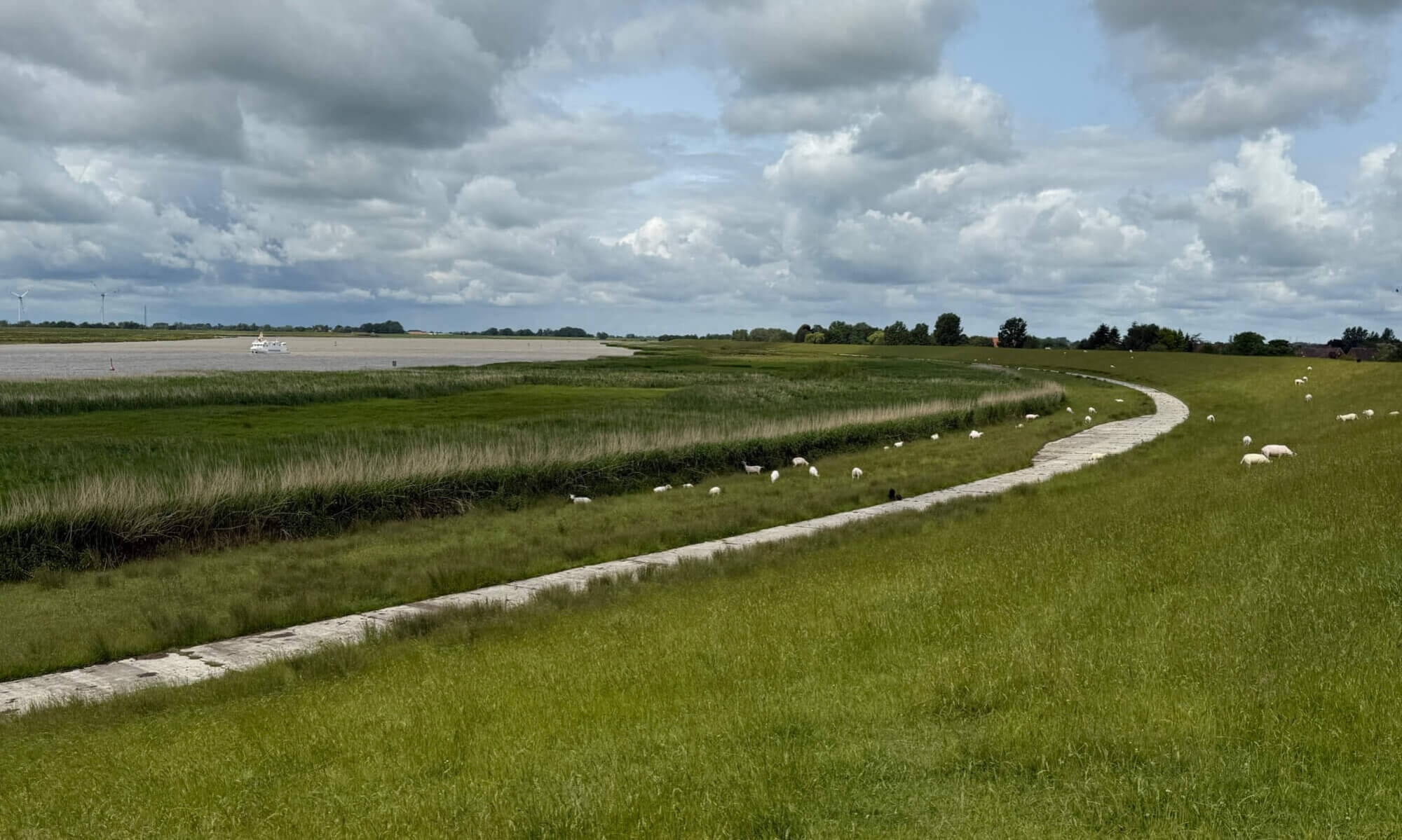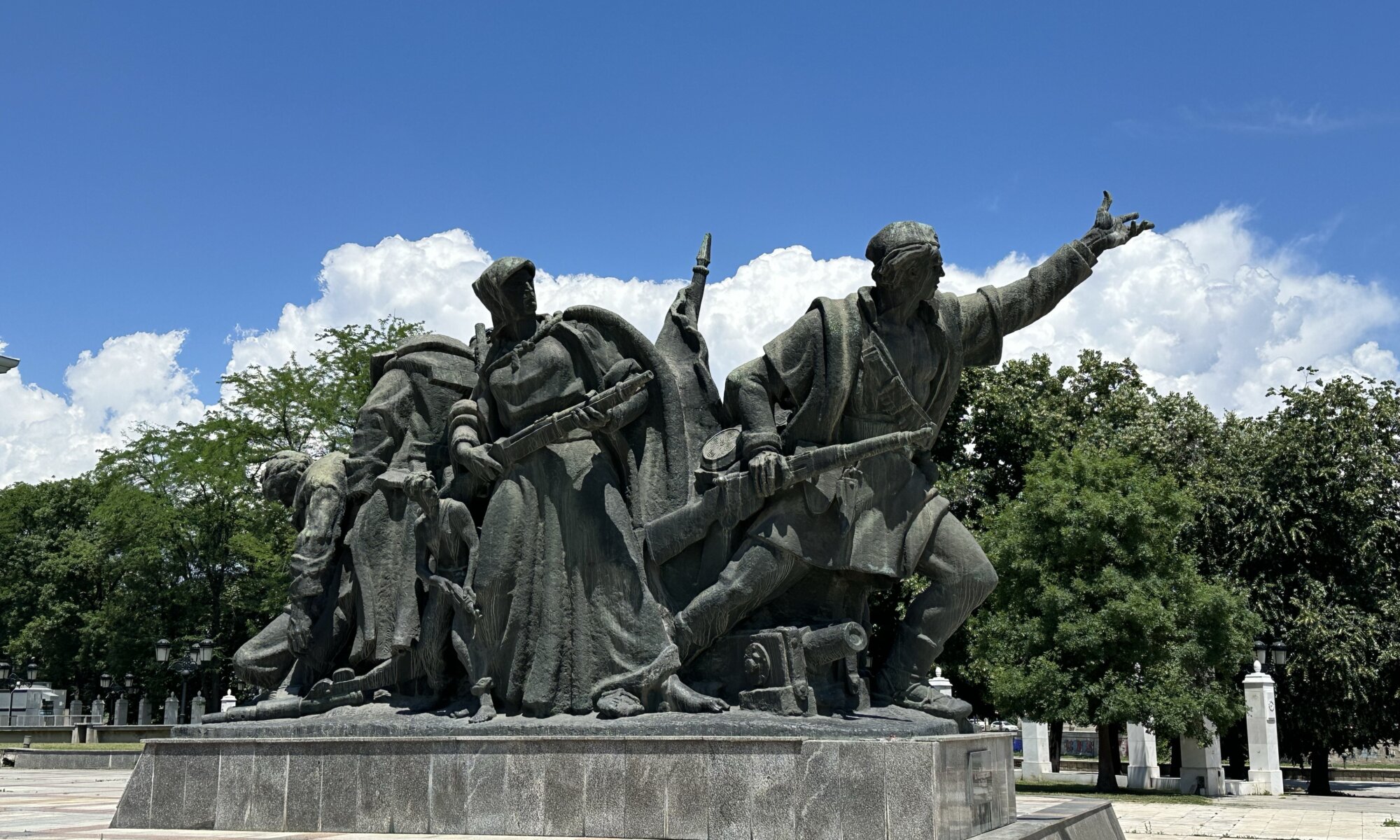The capital city of North Macedonia, Скопје, is not a destination that comes into the mind of tourists immediately. The country is a former part of Yugoslavia which received independence in 1992 but is still searching for its national identity. North Macedonia doesn’t have a coastline (only the wonderful lake Ohrid as a good replacement) and Скопје is beautifully located in a valley surrounded by green mountains. With the Romans, the Osmans and the Soviets once reigning there the city is an interesting mix of different cultures and religions – and therefore the perfect place for an extended weekend abroad.
North Macedonia has a long history of being dependent from others. After the Ilinden uprising in 1903 and the end of the Osman reign, Macedonia was split between Greece, Serbia and Bulgaria. When in 1944 Yugoslavia was founded, the region of Macedonia was finally divided into the parts belonging to Greece and the ones now part of the Soviet Republic of Yugoslavia. And after 1992 when the northern part of Macedonia became independent, the tension didn’t disappear: more than 25 % of the citizens are Albanians and call for close ties to Albania. The different ethnics live door-by-door in the country but typically don’t mix. The conflict with Greece is also still there, as Greece wanted to ensure that the country Macedonia doesn’t try to achieve unification with the Greek region called Macedonia.
Both countries claim to be the heirs of Macedonia and especially of Philipp II and Alexander the Great. That is why they have conflicts around names, national heroes and symbols. With the Prespa agreement finally a central conflict could be solved: the country is now officially named North Macedonia, while the inhabitants still can be called Macedonians. North Macedonia can now fully join international organizations and doesn’t need to by called FYROM anymore, an acronym standing for Former Yugoslavian Republic of Macedonia. The airport of Скопје once named after Alexander the Great now received a neutral name, but instead the Macedonians placed a large statue of him on one of their main squares. Pure politics.
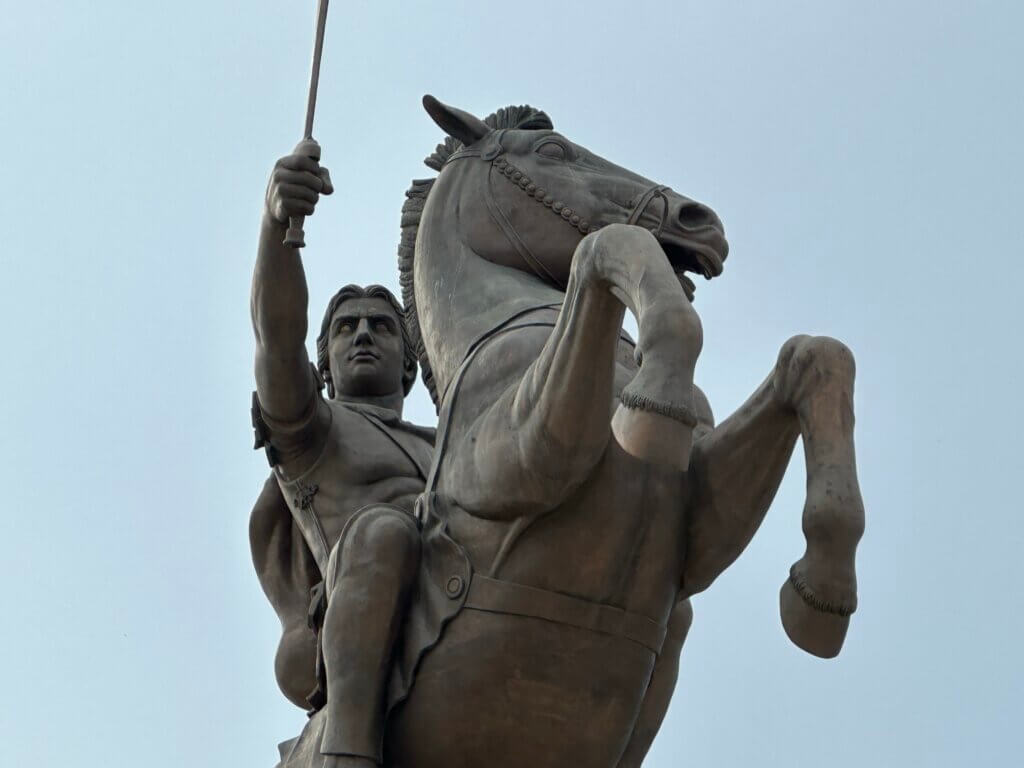
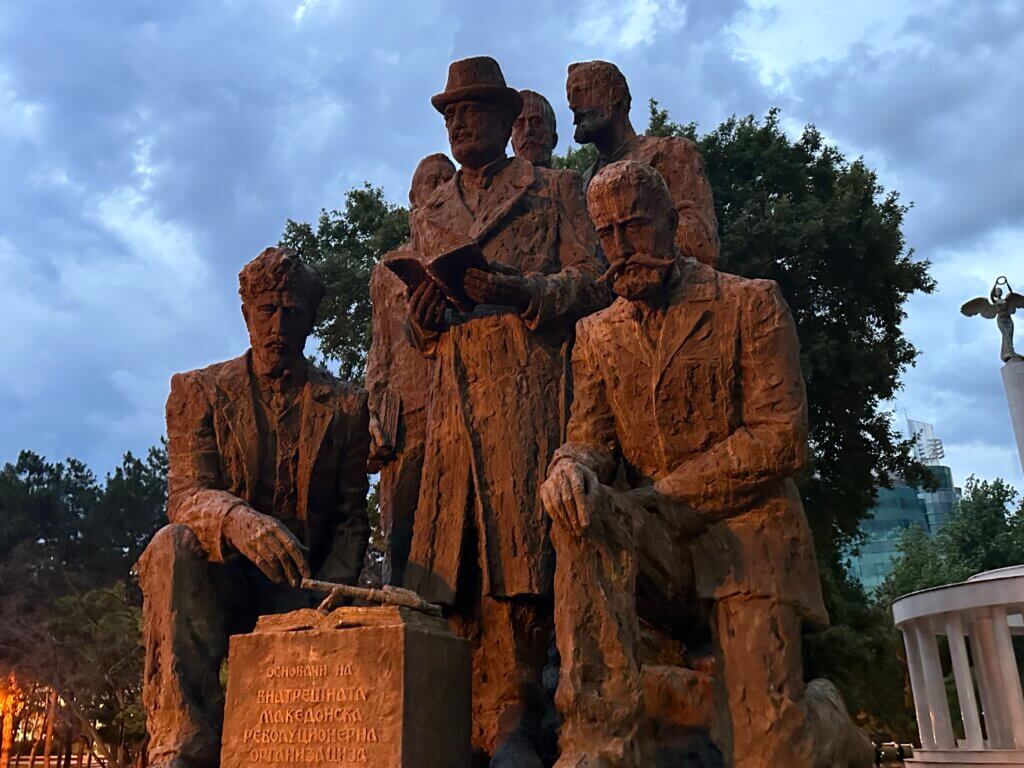
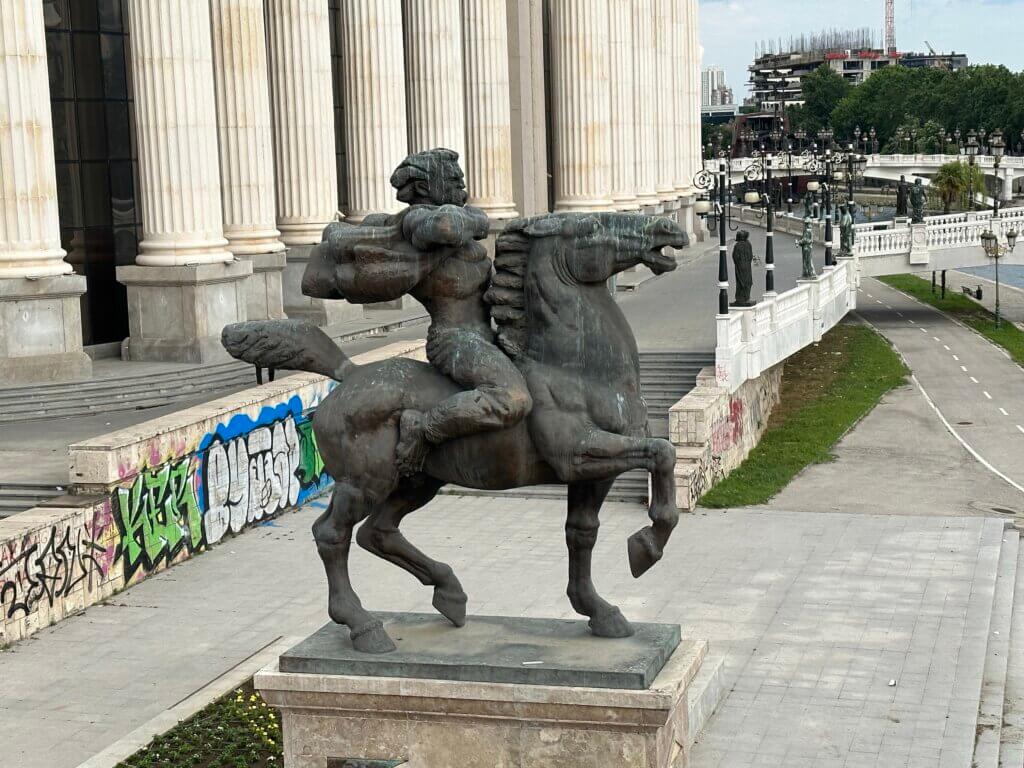
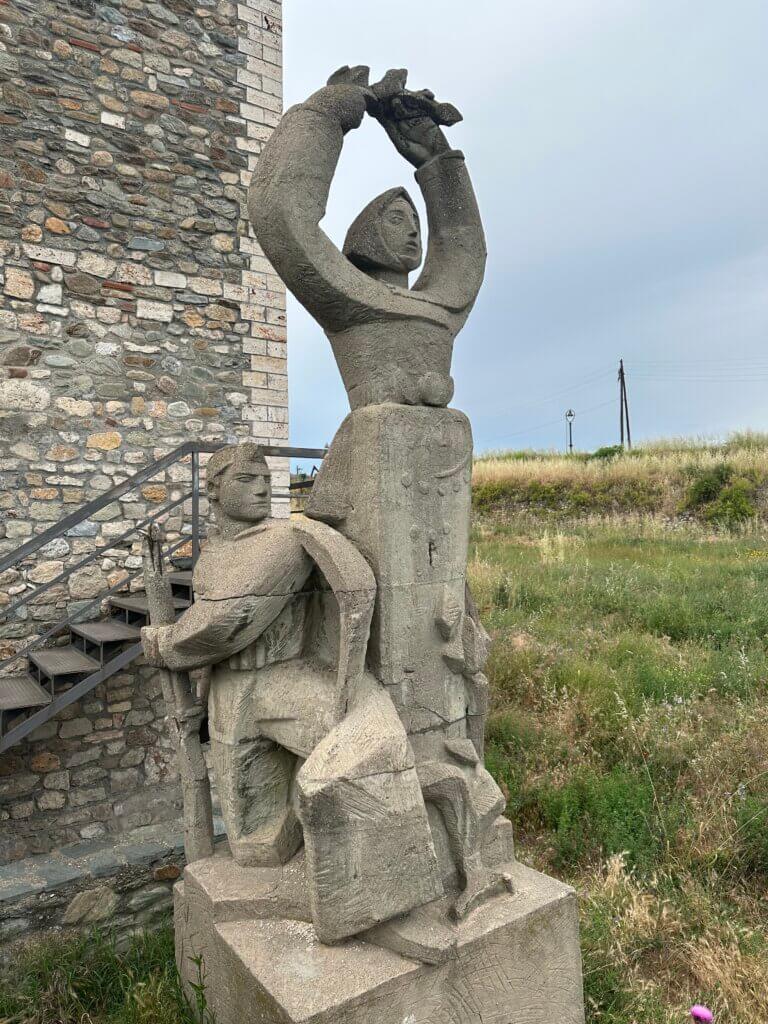
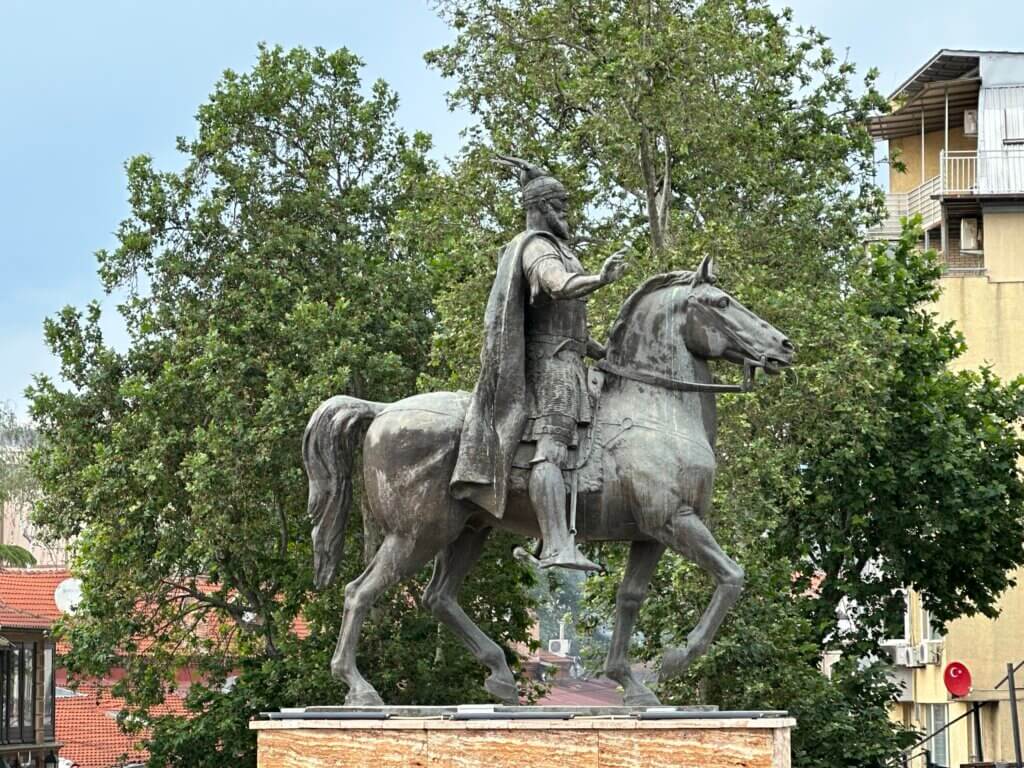
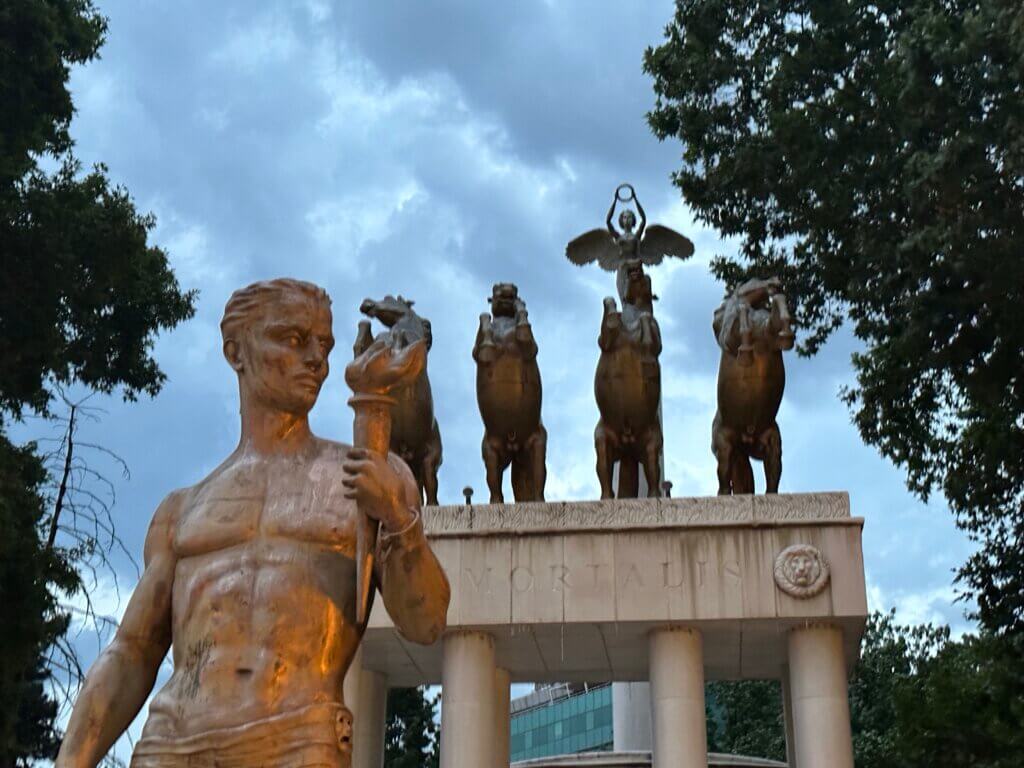
The most obvious symbol of the countries search for a national identity is the vast number of memorials and statues in the city. I’ve honestly never seen such a high count in such a small area. That also has to do with the project Skopje 2014 that has been debated intensively. While North Macedonia has one of the weakest economies in Europe (but it is transforming fast!), the government decided to turn the city center into some kind of Disneyland: buildings received historic facades, new bridges with massive decorations have been built in the city center and there are also large ships ‘anchored’ in river Vardar which contain restaurants. It is a bit absurd, but also fascinating.
Start your visit at the historic stone bridge connecting the old and the new city center. On one side of it you’ll find the triumphal arch Porta Macedonia and the impressively large statue of Alexander the Great. It is also the part of the city where Mother Teresa was born and some meters down the road they’ve created a memorial house for her. Once you cross the stone bridge you’ll be at the historic city center with narrow roads, a large amount of shops and restaurants. It is hard to spot the location of the former bazaar, but it is a nice experience to stroll through this ancient city core. From there you can climb up the hill to the Kale fortress where you can walk along the rebuilt fortress walls and climb onto some towers to have nice views on the city.
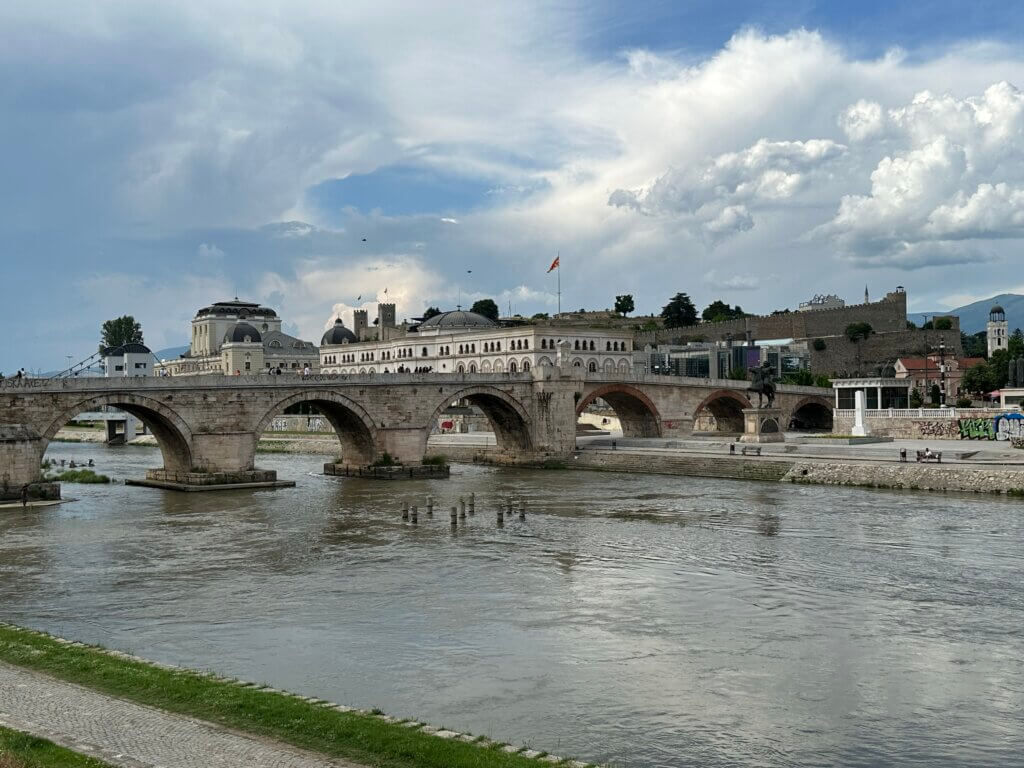
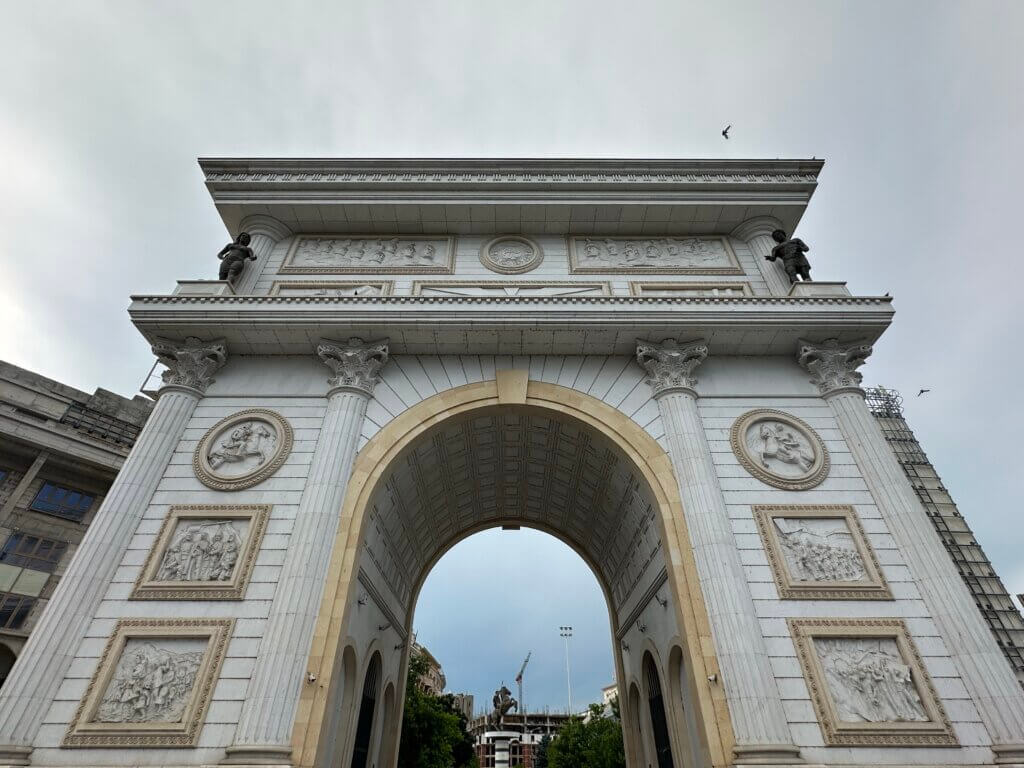

The old city center also gives you the possibility to look into mosques and hammams; remains from Osman times. The most visible Soviet trace are Brutalist-style buildings. There are not that many left, but you should take a look at the post office and telecommunication building; it is also worth to take a short walk to the railway station. Besides that there are different old and new Christian churches, with St. Clement of Ohrid currently being the most special one. If you need to take a break just walk to the wonderful city park not too far away from the city center; there is also the surprisingly good zoological garden.
A visit to Скопје wouldn’t be complete without a look at different museums like the museum of contemporary art next to the fortress, the museum of the city of Skopje in the old railway station mostly destroyed during the earthquake of 1963. An absolute beauty is the national gallery located in the ancient Davut Paşa Hammam. If you’re interested there is also the archaeological museum of Macedonia and the natural history museum close to the zoological garden, but both are rather uneasy to understand without knowledge of the Cyrillic alphabet. What I would recommend is the Macedonian Holocaust Museum, a very good history museum. It is located next to the Museum of the Macedonian Struggle for Independence which you should only explore with a guide to understand the background. Otherwise you will just have the feeling of being at a wax figure cabinet without knowing the depicted personalities.
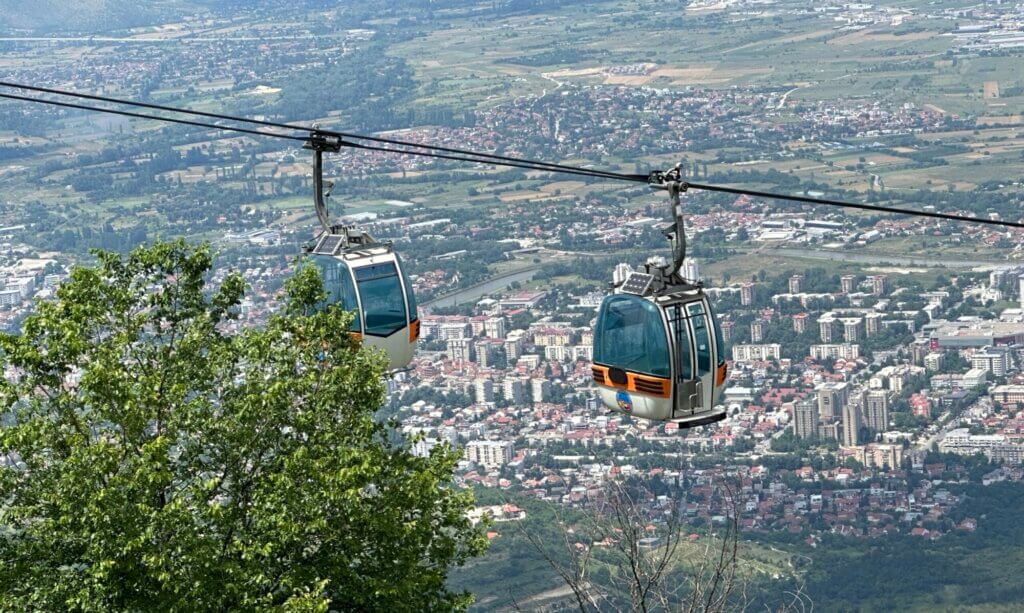
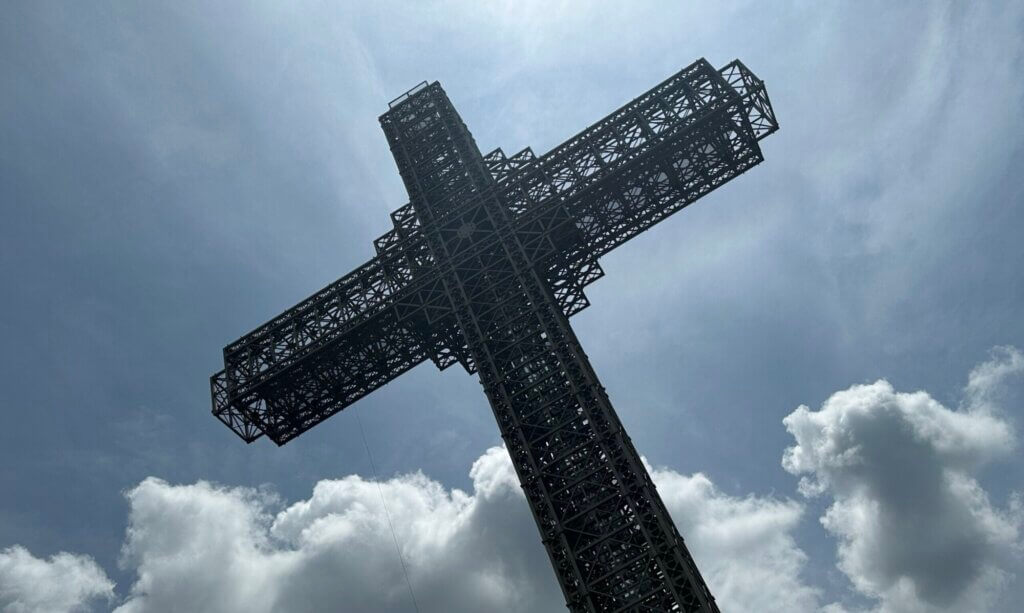
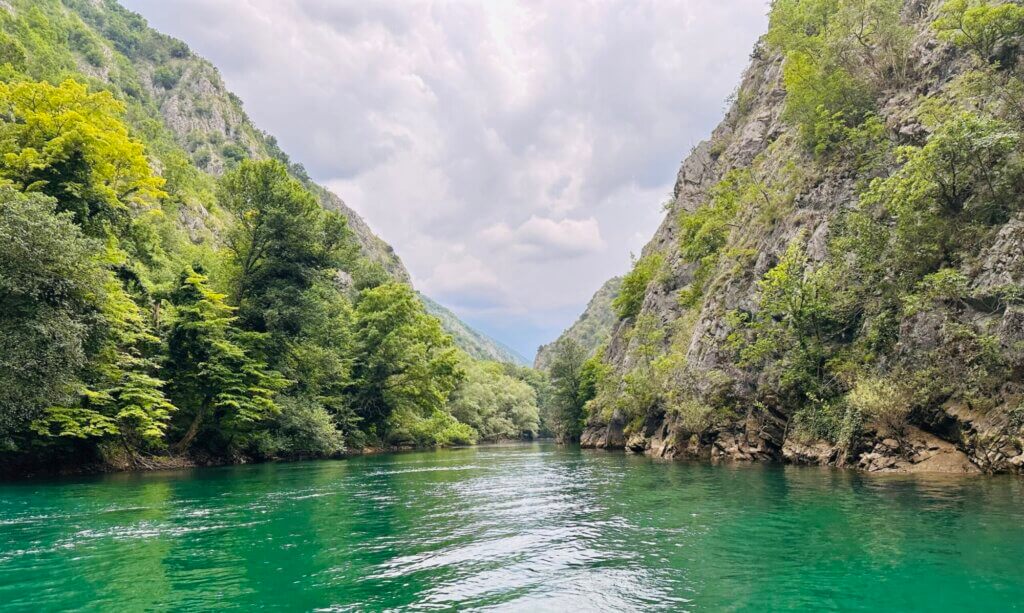
If you want to see more of the country: the most-booked tours are to the Vodno mountain ant the Millennium Cross, the Матка canyon close to the city (with a stop at the beautiful Sv. Pantelejmon) and often people also take a trip to lake Ohrid, which needs three hours to get there. Travellers often combine seeing Скопје with a trip to Kosovo, Albania or Bulgaria. Good long-distance bus connections pave the way for that.
Скопје itself is easy to visit: everything is in walking distance, but there are also London-style busses and electric scooters (Turkish BinBin) available. Ther are lots of hotels you can choose between (I opted-in for the ibis), the airport is good and offering a convenient bus transfer to the city center. And payment is absolutely unproblematic; you get denars everywhere, but the usage of credit cards is also incredibly widespread in the urban area.
Скопје / Skopje
North Macedonia
Loading map...

